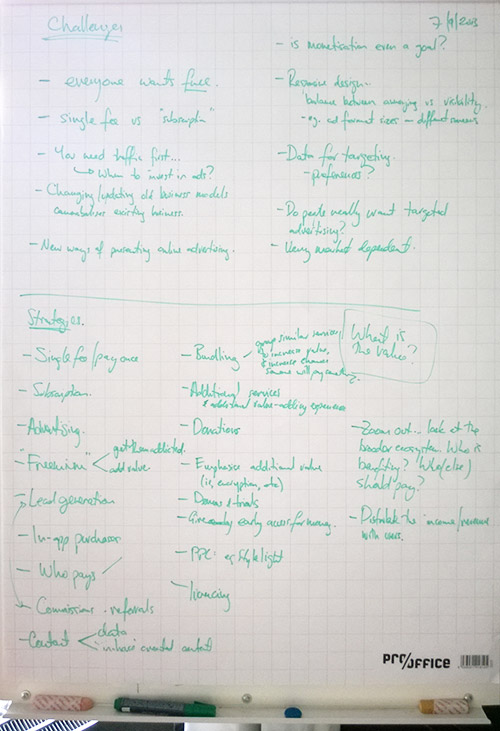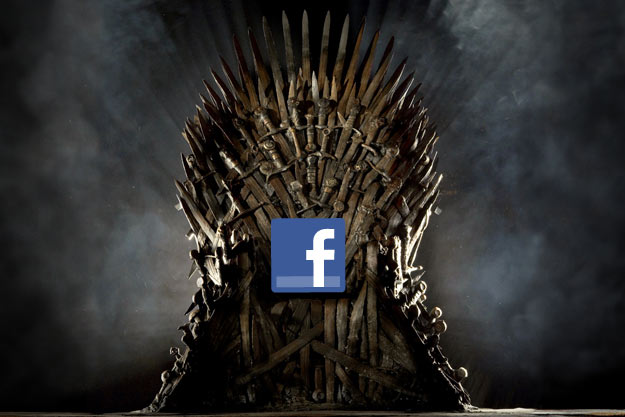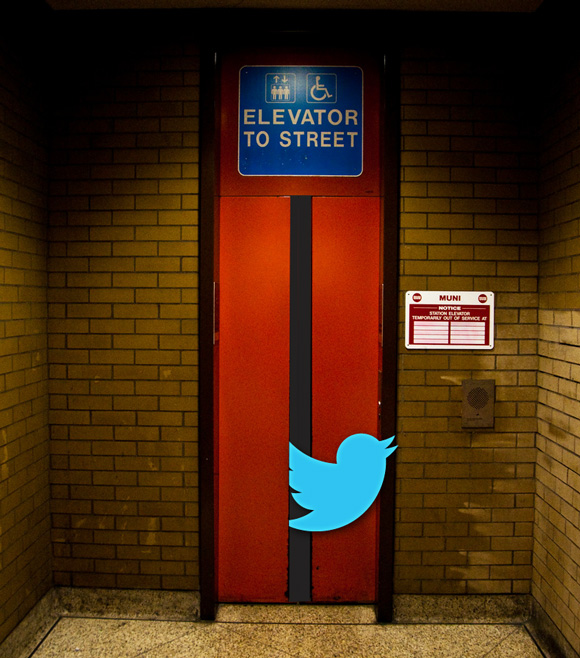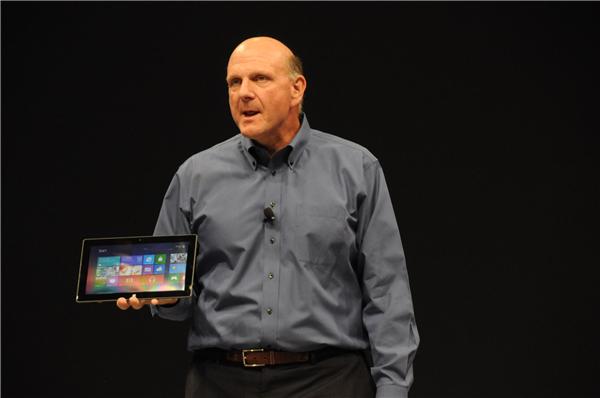At this weekend’s Product Camp in Berlin I held an interesting session on Monetising Consumer Experiences. The discussion was good and we had great input and perspectives from everyone in the room.
Here are my notes from the session:
Why do we care?
Every product manager needs to understand their business model. Remember, an idea is not a product – and it’s certainly not a business. Irrespective of who ‘owns’ business strategy in your organisation – whether it’s you, your CEO or a distant corporate strategy department – it’s critical that you understand the complete business model your product is a part of. A customer’s journey through your product doesn’t just start at the welcome screen of your app, website or whatever.
Monetisation models
- User pays
- Pay once per app/device/download
The user pays one fee for each device they install the app on. Example: Angry Birds. The three main mobile ecosystems all have payment platforms built in, but beware: they’ll all take their 30% pound of flesh on every transaction. - Pay once for all devices
The user pays once, and can use the app on any device they choose. Example: Diablo 3, or generally media content like eBooks or music. - Subscription
The user pays a recurring fee which generally allows the user to access the app or service on any device. This model is most often seen with services, such as Evernote – but also traditional apps like Feedly have adopted the model. - In-app advertising
The mainstay of traditional app monetisation. All three major mobile ecosystems offer an ad platform as part of the SDK, allowing app developers really easy access to ad content and revenue. - Demo/Trial
Make your app available to users for free with a limited feature set, for a limited time, or a combination of both. The idea is to make the value of your app available in advance to make it easier for users to know what they’re in for and to help with the purchase decision. This method is great for apps or services where the value is hard to imagine/quantify without actually experiencing it. - Freemium
In contrast to the demo/trial model, the freemium model aims to give all users a fully-functional, completely free app or service. The monetisation lies in the percentage of users who are willing to pay for a premium level of service. Here Evernote is another great example. Everyone has access to the basic app and service model, all for free. Those interested in the range of ‘power features’ pay a yearly subscription fee. Another example is Spotify. - Commission/Referrals
- Lead generation
If your product can identify sales leads for another organisation, you might be able to sell those qualified sales leads to other interested parties. - Affiliate model
Take a commission/fee for forwarding a consumer who makes a purchase. There are many examples of this in the travel industry, where websites or products referring consumers who purchase a flight or a hotel take a percentage share of the revenue. Another example is Amazon, where as an ‘Amazon affiliate’ you can earn a small commission when you refer an Amazon product to a customer who buys it. This is also a model being used by Pinterest to monetise, where by the Pinterest experience is used not just as a product discovery portal, but also connects consumers with retailers (online and offline) who sell the product. - Content/Data monetisation
If you can generate market insights through the usage of your data, you might be able to sell that to other companies or advertisers. - Bundling
Group additional similar services together to increase the overall value, such that you can reach a point where a consumer is more likely/able to pay. A great recent example: Amazon’s planned Matchbook service, which bundles traditional print copies of books with their eBook equivalent for free or for a nominal fee. - Donations
Popular among indie developers, you can try appealing to your users’ sense of charity. - Licencing
If your product can fill a need within another company’s product portfolio, perhaps you can provide your app or experience as a white-label offer for a licence fee.
Whatever strategy you use, each requires you to understand where the value is, and what value a user is likely to be willing to pay for.
Also remember to ‘zoom’ out and look at the broader ecosystem. Who else is benefiting from your product? Who else should, or could, pay?
Challenges
- Everybody wants free.
- You need traffic before you can monetise it.
- Changing or updating existing business models can cannibalise existing business.
- Advertising
- Old methods of presenting online or in-app advertising are becoming less effective.
- UX designers and even product managers generally don’t like advertising in their products (ok, this is a gross generalisation), and there is often a perception that in-experience advertising degrades the quality of the experience for the user.
- Hyper-targeted advertising appears to be the silver bullet for marketers, but is it all it’s cracked up to be?
- Effective targeting is hard. Real hard. Even if you’re facebook – and most of us aren’t – the best targeting is nothing more than an estimated guess. The mobile marketer’s wet dream is the case: It’s 8:30am and sunny. You’re on the way to work. We know you like coffee in the morning, and there is a cafe just one block away that your friend really likes, and they have a deal right now. Ping! Your mobile sends you a notification that solves your need not only for coffee, but a new cafe, before you even knew you were thirsty. The problem? We don’t know that you want a coffee – we can only guess. If you don’t want a coffee right then in that moment, then that notification is just more noise that you’re likely to quickly disable.
- Do people really want to be hyper-targeted? Lots of evidence and many studies point to increasing consumer distrust of services who try to know people better than they know themselves, especially when that knowledge is used to push products and services.

UPDATE: Added Amazon Matchbook service as example of Bundling.







